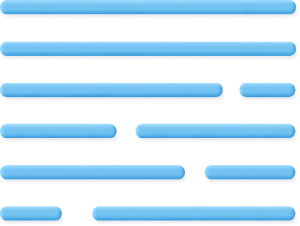




As an aesthetic provider, you know that running a successful practice takes more than just delivering excellent care - it requires optimizing efficiency and organization behind the scenes too.
That's why at Calysta EMR, we are passionate about empowering aesthetic practices like yours with innovative tools to enhance your workflow.
One solution that we highly recommend is implementing an electronic health record (EHR) system. EHRs offer a wealth of benefits that can revolutionize your practice management.
In this blog post, we'll walk you through everything you need to know to get started with EHRs, from the core functions to implementation steps.

Electronic health records are digital versions of patients' paper charts that are stored securely in a cloud-based system. EHRs contain the medical and treatment history of your patients and are designed to streamline and automate your clinic's workflows.
Some of the core features of EHR systems allow you to:
Simply put, EHRs place the information you need to deliver excellent aesthetic care right at your fingertips! Compared to paper files, they make accessing and sharing up-to-date patient data much more efficient.
While many providers recognize the value of EHR systems, some remain hesitant to adopt them. However, there are several compelling reasons EHR implementation should be a top priority for your medical spa or aesthetics practice:
With all patient data stored digitally in one place, you can quickly get up to speed on their health status before appointments. This promotes continuity of care.
EHRs can alert you to potential medication interactions or allergies, helping avoid adverse events.
EHRs eliminate the need for paper charts, filing, and physical storage. Automating workflows also saves administrative time and overhead costs.
EHRs integrate seamlessly with medical billing software to streamline insurance claims submission and payment tracking.
Digital records make it easier to implement security controls like access audits. Data backups also aid HIPAA and other healthcare regulation compliance.
By transitioning from paper to EHRs, your practice can gain significant operational efficiencies while also improving quality of care and safety.
With growing adoption nationwide, many EHR solutions cater specifically to aesthetic medicine practices like yours. When comparing options, look for systems that offer:
Focus on choosing an intuitive system that won't disrupt your staff's work habits. We recommend involving front desk staff, nurses, and aestheticians in the selection process to get their input on which EHR best matches your practice's needs and preferences.
Transitioning fully to EHR use across your practice doesn't happen overnight. Careful planning and gradual implementation is key to success. Here are some best practices to follow:
With adequate preparation and training, your team will transition smoothly into leveraging your EHR system to its fullest potential.

An EHR can only enhance your practice as much as you utilize its capabilities. Don't just use it as a digital filing cabinet - take advantage of advanced features! Here are some tips:
By fully leveraging these advanced functionalities, your EHR becomes an invaluable asset rather than just an IT expense.
While EHRs provide many practice benefits, it's important to remember that these systems house protected patient health information. Robust security and compliance measures are essential.
Here are some top considerations:
| Consideration | Details |
| Use role-based access controls | Only authorize the minimum necessary EHR access based on each user's job duties. |
| Implement strong passwords | Enforce complex passwords that are frequently changed and never shared. |
| Utilize two-factor authentication | Add an extra layer of protection by requiring a code from a separate device to log in. |
| Audit user activity | Regularly monitor access logs to identify any potential misuse of patient data. |
| Encrypt data | Protect EHR data with encryption both as it travels over networks and when it is at rest on servers. |
| Backup data regularly | Maintain backups to enable recovery in case of natural disasters, ransomware, or other threats. |
| Stay current on healthcare regulations | Monitor agencies like OCR for changing requirements and adjust EHR policies accordingly. |
| Conduct risk analyses | Identify any vulnerabilities in your EHR setup and workflows and address them. |
With constant vigilance and proactive security measures, you can prevent breaches and keep patients' sensitive information safe.
We hope this overview has shown you how EHRs can benefit your aesthetic medicine practice tremendously.
Calysta offers all the essential EHR capabilities you need, along with specialized features for your unique workflow needs. Our platform is designed for usability to ensure high adoption rates among your staff. We also provide ongoing customer support, training resources, and regular system updates based on user feedback.
Want to learn more? Contact us today for a demo and personalized recommendation on the best EHR setup for your practice.